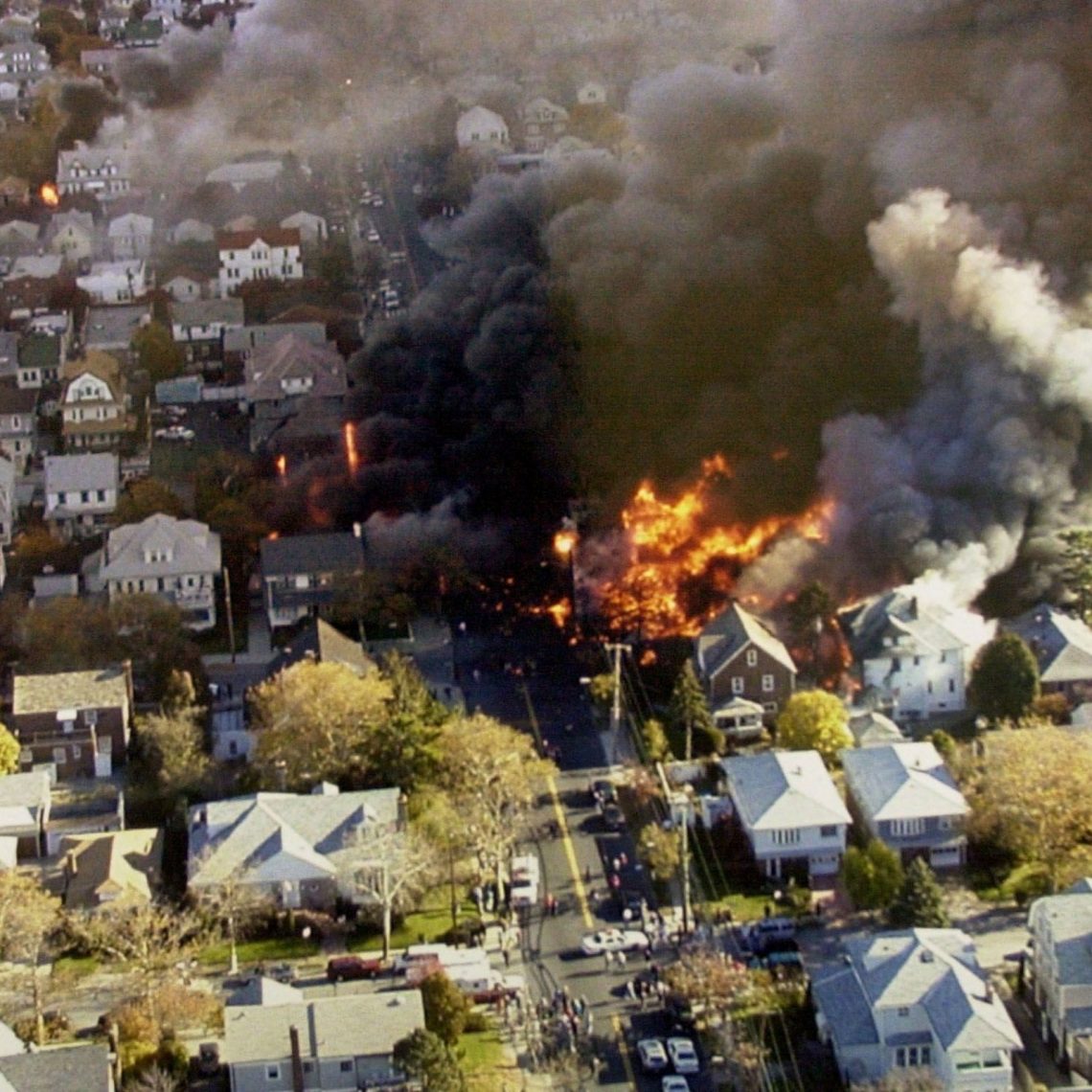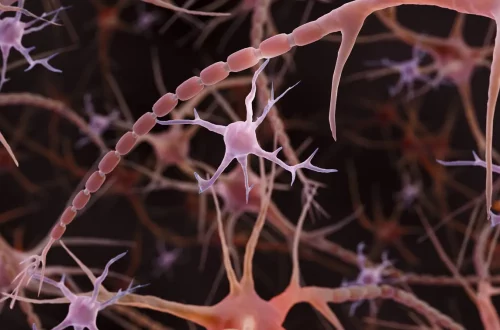On the morning of November 12, 2001, two months after 9/11, a commercial plane fell out of the sky and crashed to the ground in Queens. If you don’t remember it happening, you’re not alone. Even thought it was the second-largest avaition disaster on American soil, once it was determined (it wasn’t another terrorist attack, it was quickly off the media landscape.
American Airlines Flight 587 crashed to the ground the morning of November 12, 2001, minutes after taking off from JFK airport. A pilot’s overresponse to the wake caused by the 747 that took off just before them was the cause of the crash. The plane went into a literal tailspin and plowed into the ground less than three minutes later. No one on the plane survived. Five people on the ground were killed.
The flight was full, with 251 passengers and nine crew members. it was another terrorist attack. It was quickly clear that it wasn’t, so the second-largest aviation disaster in American history barely happened in the press.
If people don’t know about the crash, they certainly don’t know what happened afterward. This invisibility is true of all disasters. The media shows the moment of the event, survivors stumbling around, and first responders attempting to put out fires and find the injured and the trapped. Having been part of the response to 9/11, I have protected myself as much as possible from any media footage, but it’s slipped in. It’s always the same few scenes: the planes crashing into the towers, the towers on fire, survivors covered in dust, and first responders climbing around the stories-high snarl of metal and debris at the site. The site was known as Ground Zero to the world, but it was called the pile by those who were on it.
After Flight 587, there was little video of the crash itself. Who is randomly filming the sky in Queens at 9:15 on a Monday morning? The media coverage instead consisted of aerial scenes of the crash site and some footage of first responders putting out the massive fire. Most people have not even seen that. Much less what happened when the fire was out.
I can’t imagine what it was like for the NYPD and NYFD to fight the fire, get it put out, and then stand there in the aftermath. Everyone involved was already up to their eyes in 9/11. They’d lost people, they’d seen things no one should see, and now, look at this.
Many firefighters and police officers already lived in Queens, so if they were home, they’d grab whatever gear they had at home and head to the scene. Others came from Ground Zero. Others headed in from outer boroughs. A policeman said, though, that they had learned from 9/11 to put out a stand-down call. The drive to help was strong, and they needed the scene to stay under control.
At the medical examiner’s office, we prepared for Flight 587 in the same way as we were already responding to the World Trade Center. For 9/11, every victim had a blue hanging folder that held all the information we had on them. When a remain was identified, its manila folder would go in the blue one.
After the towers fell, someone at the medical examiner’s office, I don’t know who, made a decision on how we were going to track each remain. A white label went on the outside of each Manila folder. A seven-digit identifier was on the folder. It started with DM – Disaster Manhattan – and then a five-digit number.
Father Mychal Judge’s body was DM00001. He was the chaplain for the fire department and died from falling debris. We would make past DM20000 for the 2,753 people. After the identification process ended in 2005, the number continued to grow, as bones and other fragments were still being found on the rooftops of surrounding buildings or in nooks and crannies no one had been in for years.
Alongside, identifications continue, due also to the growth in DNA technology and the use of kinship genealogy. Three people were identified in August. Even the victim list has grown as firefighters and other first responders started to die as a result of their work at Ground Zero. For one thing, asbestos insulated the infrastructure of the buildings.
On the day of Flight 587, a new set of labels was printed. The same procedure was followed, but the numbers on the stickers started at DQ000001. The same kind of hanging folders were used, this time red.
After the crash, our office received all the remains, examined by staff (medical examiners, still carrying on their regular work as well, forensic anthropologists and dentists), cataloged them, and tried to match them to someone in the blue folders. We also collected DNA samples and stored the remains in large refrigerated trucks.
We were lucky; we had the easy job. We accepted the remains, but that meant someone needed to deliver them. And that meant someone needed to collect them. And put them in bags. And not all the bodies were intact – pieces of bodies, pieces of tissue, needed to be gathered up and brought to us as well.
The NYPD members assigned to our office in Manhattan went down to the site to join the firefighters. A decommissioned hangar at a nearby base was taken over as the holding area. All the bodies had to be brought in there and laid out on the concrete. Can you imagine?
The people I saw after did not talk much about what they saw. Some things don’t fit into words, but they did talk, extensively, about the smell. The horrible, piercing, and soul-consuming smell. The Airbus A300B4-605R had a capacity of 18,000 gallons of jet fuel, a refined and modified version of kerosene. The fuel started the fire, but it also soaked everything on the ground, including the dead.
Flight 587 was a specific and contained kind of horror. A nightmare within a nightmare. The people I saw after were haunted. More so than the people I saw after 9/11. I recently watched a video of an NYPD detective telling stories about his time with the city. He described 9/11 in a few sentences. But Flight 587 took two paragraphs. He talked about the smell of the jet fuel, but he also talked about the smell of death. I never thought about bodies burning in the firestorm. Cooked flesh.
My role at the medical examiner’s office took me to the Family Assistance Center, set up at the Jacob Javits Center, almost directly across Manhattan from our office. In a huge conference space with soaring ceilings, round tables and chairs, like the kind you might see at a wedding, were set up. We gave each table a paper tent with a number.
Funeral directors volunteering from a national disater team at our office were sent to Macy’s to get suits so they could talk with families. NYPD came, along with staff from our office who would be doing the notifications to families. Almost all of these women spoke Spanish. Almost none of the funeral directors did.
Families were directed to us at the airport or contacted by airline representatives. There were airline representatives and staff from our office. I’m sure there were other agencies there, but I don’t remember them. I was lucky: I was dealing with the people who were dealing with the families rather than working with them myself. I had met with many, many families from 9/11, and it is hard, holy work.
Room dividers on wheels, the kind you might see in a busy ER, were put together to create small spaces for the families to meet the women from our office if an identification was made. We were able to identify many people quickly because we had a manifest, and some passengers were carrying their licenses or other identifying information. They had visual privacy, but no sound was even touched, much less blocked. While notifications were being made, our funeral directors and NYPD officers sat at the round tables with the families, collecting information from them and providing them comfort and direction.
We were collecting as much ante information as we could. People had been told to bring pictures. We had descriptions of scars, tattoos – these identifications take longer than a wallet in a pocket. And many identifications needed to be made or verified with DNA, so swabs from family members needed to be collected. Our staff was scrambling at the office and passing on information as they got it.
Families arriving and leaving, people being notified of identifications, and everyone talking at once created a cloud of sound that filled the space around us. I could not hear specific words, but the sound filling the room was radioactive with despair. People’s lives had been turned inside out and at some point, they would leave and carry that irrevocable destruction back out into their worlds. I know everyone wasn’t speaking Spanish, I know everyone wasn’t from the Dominican Republic, but that’s how it felt, and how it still feels.
So, as I drove past my mailbox and drove into town, I realized what was happening to me was caused by the scenes I was seeing online of people being snatched and shoved into unmarked vans by men in masks who looked like this was definitely their first rodeo. What I was seeing looked and felt similar to that day in November.
This was what had turned the wheel on the valve lock. This was why there were expertly trained commandos crawling through the woods by my house. When I realized it was ICE raids, I made the connection between the two traumatic events. It makes me think of Maya Angelou’s idea that people may not remember what you said or did, but they will not forget how you made them feel. It was the feeling of the two events that connected them. The feeling of that day and the feeling of what was happening now was the same: people suddenly untethered from their own lives.
Just like with Flight 587, you see people’s lives being turned inside out. You have people being accosted and dragged away. But people, those taken and those left behind, have to deal with the horror of after. Phone calls will need to be made. Tears will be shed. The disaster of it will both suck the air out of the room and fill it with the despair about what has happened and what to do now. Children still need to be picked up from school. People need to eat dinner. And all the while: how are we going to pay the bills? Will I be taken, too? My children? And if the person lived alone, are there pets left behind? Food cooking on the stove.
They don’t look the same, but they feel the same. The top three pictures are from ICE raids. The bottom three are from the crash. The one on the left was taken the day of. The other two were taken at the one-year anniversary. If I had any pictures from the family assistance center. The top and bottom rows would be indistinguishable.
So, as I drove past my mailbox, and drove into town, I realized what was happening for me was caused by the scences I was seeing online of people being snatched and shoved into unmarked vans by men in masks who looked like this was definity their first rodeo. What I was seeing looked and felt similliar to that day in November.
This was what had turned the wheel on the valve lock. This was why there were expertly trained commandos crawling through the woods by my house. When I realized it was ICE raids, I made the connecting between the two traumatic events. It makes me thing of Maya Angelou’s ideat of people may not remember what you said or did, but they will not forget how you made them feel. It was the feeling of the two events that connected them. The feeling of that day and the feeling of what was happening now was the same: people suddenly untehered from their own lives.
Just like with Flight 587, you see people’s lives being turned inside out. You have people being accosted and draged away. But people, those taken and those left behind, have to deal with the horror of after. Phone calls will need to made. Tears will be shed. The disaster of it will both suck the air out of the room and fill it with the despair about what has happened and what to do now. Children still need to be picked up from school. People need to eat dinner. And all the while: how are we going to pay the bills? Will I be taken, too? My children? And if the person lived alone, are therre pets left behind? Food cooking on the stove.
They don’t look the same, but they feel the same. The top three pictures are from ICE raids. The bottm three are from the crash. The one on the left was taken the day of. The other two were taken at the one year anniversary. If I had any pictures from the family assistance center. The top and bottom rows would be indistingushiabe.






These things should not feel the same. Nothing we intentionally do has human beings, much less as a government, should match the trauma of a plane crash. Sometimes I wish I could take Donald Trump and Kristi Noem to that hangar. I wish I could somehow cram their faces into the smell. I would take them to the family assistance center and meet with a family to do an identification. I would make them spend more than fifteen hours listening to the wailing as it got smaller and as people left, just like I did. But I don’t think they would care.
And with a plane crash, the reall horror happens in the time after the actual event. The van with your father drives off. You are crying, he is crying, but what happens next?
Still not done…




